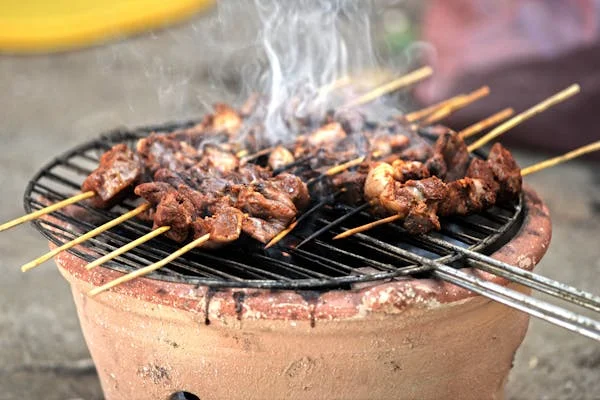Introduction
Cevurı is a term that has fascinated scholars, historians, and culinary experts alike. With deep roots in various cultural and historical contexts, it remains a subject of much exploration. From ancient traditions to modern-day interpretations, cevurı represents more than just a word it embodies a connection to history, culture, and innovation. This article aims to provide a comprehensive understanding of what cevurı is, where it comes from, and how it is used today.
What is Cevurı?
The term cevurı is used across various disciplines, making it a multi-faceted concept. Primarily, it refers to a type of traditional food preparation or cooking method. However, its interpretation varies depending on the region and the cultural context in which it is used. In the culinary world, cevurı is often associated with specific dishes and cooking techniques that highlight local ingredients, traditional recipes, and methods passed down through generations.
The word itself can be traced to several cultures, often taking on different meanings based on the language and region. It could be related to a type of dish, a method of food preparation, or even a cultural symbol. Regardless of its exact definition, cevurı is a term that is deeply connected to culinary heritage.
The Culinary Significance of Cevurı
In many cultures, cevurı is synonymous with dishes that feature slow-cooked meats, vegetables, and aromatic herbs. These meals are often made using traditional methods, allowing the flavors of the ingredients to meld together over time. The ingredients used in cevurı vary depending on the region but typically include locally sourced produce, meats, and spices. Some regions use lamb or chicken, while others focus on plant-based ingredients like beans, peppers, and tomatoes.
The preparation of cevurı often involves marinating meats or vegetables in a blend of spices and seasonings, allowing the flavors to develop. Slow cooking ensures that the dish is tender and flavorful, often cooked for several hours over a low flame. This method not only enhances the taste but also preserves the nutritional value of the ingredients, creating a rich, hearty meal that reflects the culture’s love for simple yet flavorful food.
Traditional Methods in Preparing Cevurı
Cevurı is more than just a dish; it represents a specific way of cooking that is deeply rooted in tradition. Understanding the preparation of cevurı involves examining the methods and techniques that make it distinct from other cooking styles. Let’s take a look at some of the key elements involved in preparing cevurı dishes.
Marination and Seasoning
Marination is a key part of the preparation process for cevurı. Whether it involves marinating lamb, beef, or vegetables, the process is essential for developing the depth of flavor in the dish. Spices like cumin, paprika, coriander, garlic, and various herbs are commonly used to create a rich base for the dish. Marinating the ingredients also helps tenderize them, ensuring that the final dish is juicy and easy to eat.
Slow Cooking for Maximum Flavor
Once the ingredients are marinated, the next step is slow cooking. This technique allows the flavors to deepen and blend, creating a harmonious taste. Whether cooking over a wood-fired stove, in an oven, or on an open flame, slow cooking helps achieve the desired texture and flavor. The low temperature ensures that the proteins in the dish break down slowly, leading to a tender, melt-in-your-mouth consistency.
Use of Local and Fresh Ingredients
One of the defining characteristics of cevurı is its reliance on local and fresh ingredients. In many cultures, cooking is an act that connects people to the land and the seasons. As such, cevurı dishes are often prepared with seasonally available ingredients. Fresh vegetables, meats, and herbs are carefully selected to ensure the dish is both flavorful and nutritious.
The Cultural and Historical Origins of Cevurı
The origins of cevurı can be traced back to several different regions. As a cooking technique, it is common in parts of the Mediterranean, Middle East, and Central Asia, where slow cooking methods and the use of aromatic spices have been staples of culinary traditions for centuries.
Historically, cevurı dishes were often prepared for communal gatherings and celebrations. This reflects the social nature of food in these regions, where shared meals help foster a sense of community and connection. Over time, the techniques used to prepare cevurı have been passed down through generations, maintaining their cultural significance.
Ancient Roots of Cevurı
The roots of cevurı can be traced back to ancient civilizations, where slow cooking was essential for preparing meals. The process of marinating and cooking meats over a long period allowed people to make the most of limited resources, turning tougher cuts of meat into tender, flavorful dishes. This was especially important in regions where agriculture was the backbone of the economy, and the need to preserve food for long periods was vital.
The Role of Cevurı in Modern Culinary Practices
Though cevurı has deep historical and cultural roots, it continues to hold relevance in modern culinary practices. In recent years, there has been a resurgence of interest in traditional cooking methods, with chefs and food enthusiasts seeking to revive ancient techniques. Slow cooking, once seen as a method of necessity, has now become a way to highlight the natural flavors of ingredients and create dishes that are both rich and comforting.
Fusion of Traditional and Modern Styles
Modern chefs often take inspiration from traditional cevurı dishes, adding contemporary twists that appeal to modern tastes. For example, the use of locally grown organic vegetables, the introduction of new herbs and spices, and even plant-based substitutions for meats are ways that cevurı has adapted to modern sensibilities. The slow cooking method, however, remains unchanged, maintaining its role as a cornerstone of the dish.
Cevurı’s Place in Popular Culture
Cevurı has also made its way into popular culture, with food bloggers, chefs, and home cooks alike exploring its rich flavors and historical context. Social media platforms, such as Instagram and YouTube, have allowed for the sharing of recipes and cooking tips, bringing cevurı into the homes of people around the world. Its versatility and deep flavors make it an attractive option for anyone looking to explore the world of traditional cooking.
Globalization and Cevurı
As the world becomes increasingly interconnected, the fusion of different culinary traditions has become more commonplace. Cevurı, with its rich history and diverse interpretations, has found its way into kitchens across the globe. Its popularity is a testament to the way that food can transcend borders and bring people together. While the dish may look different in various countries, its essential components the slow cooking method and use of fresh ingredients remain constant.
The Health Benefits of Cevurı
In addition to being delicious, cevurı dishes also offer a range of health benefits. Slow-cooked meals, especially those made with fresh vegetables and lean meats, are packed with nutrients. The slow cooking process helps retain the vitamins and minerals found in vegetables, while the marination process can enhance the absorption of essential nutrients from herbs and spices.
Furthermore, cevurı dishes often use ingredients that are rich in antioxidants, such as garlic, tomatoes, and herbs like oregano and thyme. These nutrients help fight inflammation and support the immune system. The use of fresh, local ingredients also ensures that the dish is free from artificial preservatives and chemicals, making it a healthier option for those looking to maintain a balanced diet.
Conclusion
Cevurı is more than just a culinary tradition it is a reflection of the cultures and communities that have embraced it. From its ancient origins to its modern adaptations, cevurı remains a vital part of the culinary landscape, offering a delicious and healthy way to experience the flavors of the past while looking toward the future.
Whether you are a food enthusiast, a chef, or someone interested in exploring different cultural traditions, cevurı provides a unique opportunity to connect with history, culture, and community through the act of cooking and sharing a meal.
By embracing both traditional techniques and modern innovations, cevurı will continue to thrive in kitchens around the world. It serves as a reminder that the art of cooking is not just about sustenance but also about celebrating the rich cultural heritage that defines us.







